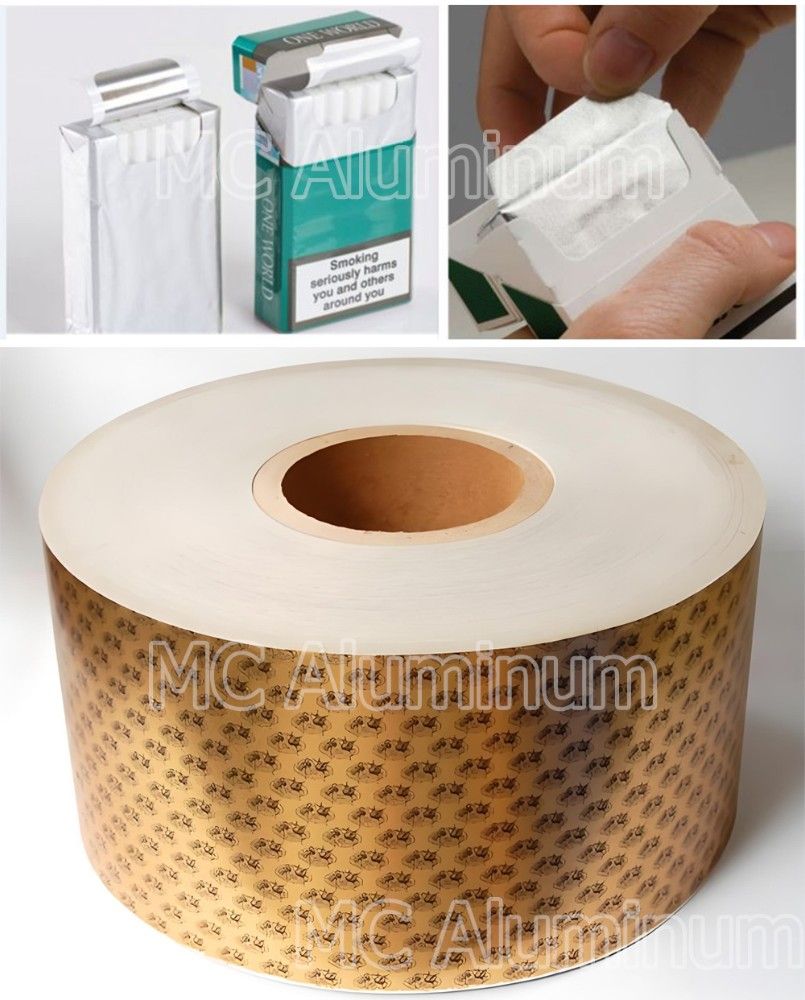Tobacco packaging inner liner paper is a core functional material in cigarette packaging. It is placed on the inner side of the cigarette box and directly wraps around the cigarette sticks.
Tobacco inner liner paper is usually made of multi-layer composite materials to fulfill its multiple functions:
Base Paper Layer
Serves as the support layer, providing the strength and stiffness required for the liner paper.
Barrier Layer
Aluminum foil is laminated with base paper. Aluminum foil has excellent barrier properties and can effectively block water vapor, oxygen and light. The commonly used alloys of aluminum foil are 8011 or 1235, and the state is O. It is used for printing or painting for cigarette packaging, with a thickness of 0.0065 to 0.007 mm and a length of 200 to 1400 mm.

Functions of Aluminum Foil Inner Liner Paper in Cigarette Packaging
1. Barrier and Protective Functions
(1)Moisture Resistance and Humidity Control
The aluminum layer or polymer coating forms a dense barrier that effectively blocks external moisture, preventing tobacco from becoming damp or moldy.
At the same time, it reduces internal moisture loss, maintaining stable tobacco moisture content and ensuring consistent flavor and combustion quality.
(2)Aroma Preservation
Prevents the escape of volatile aroma compounds and protects against external odors, maintaining the original flavor of the tobacco.
For example, coated liner papers may contain microcapsules of tobacco extract that slowly release aroma to enhance freshness.
(3)Light Shielding and Anti-Aging
The aluminum or metallized coating reflects UV and visible light, preventing photo-induced oxidation of tobacco oils and the degradation of chemical compounds, thereby extending shelf life.
Vacuum metallized paper can block more than 95% of ultraviolet rays.
2. Decoration and Anti-Counterfeiting
(1)Visual Enhancement
The aluminum layer offers a metallic luster, while colored coatings (e.g., holograms or printed patterns) enhance visual appeal and brand recognition.
For example, holographic anti-counterfeit layers use laser embossing to create dynamic optical effects that give the packaging a more premium feel.
(2)Anti-counterfeiting technology carrier
Holographic pattern: micro-text, dynamic images and other difficult-to-copy elements are directly embossed on the aluminum layer and require special equipment to identify
3. Environmental and Adaptive Innovations
Resource Efficiency
Vacuum metallization technology applies aluminum layers only 0.02–0.03 μm thick, reducing aluminum usage by up to 90% compared to traditional rolled foil (7–8 μm).
In addition, biodegradable base papers (e.g., wood pulp-based materials) help reduce environmental impact.
4. User Experience Design
Liner papers are often designed with easy-tear or lift-open features, sometimes incorporating tear lines or U-shaped cuts, making them easier for consumers to open and enhancing the overall experience.
5. Safety and Hygiene Protection
(1)Sanitary Barrier
Coatings prevent direct contact between the tobacco and packaging adhesives, reducing the risk of chemical migration contamination.
(2)Antibacterial Function
Some eco-friendly liner papers incorporate plant polyphenols (e.g., rosmarinic acid) to inhibit microbial growth.
